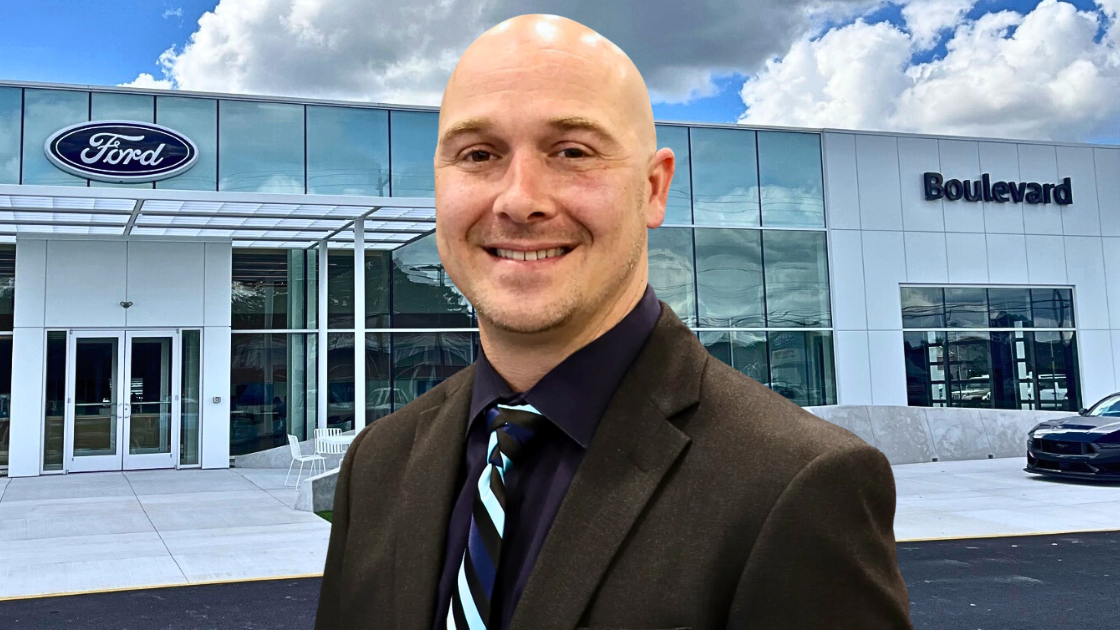
Welcome to another episode of the Car Dealership Guy Podcast.
On this episode, Jeff Watson, Owner and Operator of 4 Seasons Auto Sales, joins the show to do a deep dive into the buy here pay here model and the challenges of being an independent retailer. In addition to being a successful dealer, Jeff also runs The Independent Dealer podcast alongside his co-host Luke Godwin, where he discusses the unique challenges of the used car sector.

1. Entering the car business.
Jeff went to college in Southern Utah, running a pool-cleaning business during his senior year. Realizing that there was an untapped opportunity, he leveraged his family’s money to loan car buyers money that other dealers deemed “unbankable.” This continued until after the 2008 recession, at which point Jeff decided to enter the business as a buy-here-pay-here dealership.
2. Managing customer relationships.
Jeff quips that he isn’t a stereotypical buy-here-pay-here dealer. For him, each customer presents a long-term opportunity, which requires maintaining the relationship for as long as possible. “I look at it as assets,” he explains. ”I need this car to go 36 months. I need this customer to be in the car for 36 months or more.” This focus allows Jeff to retail anywhere from 40 to 50 vehicles a month, 80% to 90% of which are financed in-house. He adds that he also does what he can to assist drivers, helping them with repairs, offering gapped forgiveness, etc.
3. Financial quirks of buy-here-pay-here.
For Jeff, the average sales price is typically around the $10,000 mark, an increase from before the pandemic when prices were closer to $8,000 on average. Like most buy-here-pay-here dealerships, Jeff runs a related finance company, which he also uses to defer income. “If I had a $10,000 financed contract with my dealership, I'm gonna sell it over to my finance company at a discount…because chances are 20% to 30% of my loans are not going to collect so I take a 20% to 30% discount on that note when I buy it from the dealership,” he explains. Under this system, the dealership technically makes just enough money to cover its expenses, whereas the related finance company takes the receivable and defers off the discount, putting it into future receivables. “As you’re growing or scaling, it’s just a great way to not have to have a huge income burden, you know, tax bill at the end of each year,” Jeff concludes.
4. Paying and incentivizing workers.
Incentivizing and paying employees is more complex at a buy-here-pay-here dealership. Jeff’s general manager is paid a percentage of multiple revenue sources, including retail sales, down payments and financing. Bonuses are also given as a result of selling more F&I products, including reinsurance and warranties.

DLRdmv - Everyone knows out of state titling is a major headache. It doesn’t have to be this way. Our friends at DLRdmv have created a program called DLR50 - A revolutionary approach to 50 state titling. With DLR50, your dealership now has 24/7 portal access to calculations, pre-filled forms, checklists, inquiries, plus white glove processing and specialist support. You can even acquire duplicate titles in all 50 states directly through the DLR50 platform! Visit dlr50.com to learn more.
CDG Recruiting - Building on the success of my industry job board, I’m launching CDG Recruiting — a more hands-on, white-glove automotive recruiting service. Our team has decades of experience and has successfully placed over 1,000 roles in the automotive industry. So if you’re ready to find your next rockstar employee, try CDG Recruiting today by visiting cdgrecruiting.com.
5. Used dealer associations.
Jeff notes that the used car dealer community is more fragmented than other areas of the retail automotive sector. While franchised retailers are usually involved in both their local and national dealer associations, only a small percentage of those in the preowned space participate in similar organizations. This lack of connectivity made learning about the car business difficult for Jeff, especially as a newcomer to the industry. Several years after becoming a dealer, he attended a meeting with fellow retailers. “I show up to my first meeting with 20 other dealers…I'm thinking I got it all figured out because I've been at it for four years, and I just get slapped right in the face,” he recalls. “I wasn't taking a discount from those dealers when I was buying the paper. So I was eating all that. I was giving them all the profit. I wasn't marking my cars up enough. I didn't have any reinsurance products.” Jeff believes that many used car dealers in the business today are just as naive as he was back then, which is why he advocates for more participation in retailer associations.
6. Dismantling stigma.
Running a buy-here-pay-here dealership comes with plenty of stigma. Many assume these businesses are predatory, selling vehicles in poor condition to consumers who are desperate due to low credit scores and a lack of support from banks and financing institutions. Because of this, retailers in this space often have poor reviews. However, 4 Seasons Auto Sales has a 4.8 rating, which Jeff attributes to the care he gives his customers and the work he puts in to ensure the business relationship remains positive for the extent of the loan. For Jeff, it’s not about preventing conflict since issues are always going to arise, but rather how they are addressed. Reaching out to and assisting customers who leave negative reviews has also served to keep his business’ reputation intact.
7. Term lengths.
Jeff targets 30-month terms, although he admits that his average is closer to 36 or 38 months. However, keeping the term length shorter is usually better for the customer due to the interest rates involved. “Sure, I could give you a 60-month loan on something, but guess what? With the interest rates that I have to charge you, you’re gonna pay twice as much in interest than you do for the darn car, and I just can’t do that,” he explains. Finding a balance between term length, interest rate and what the consumer can actually afford is critical to ensuring the deal’s success. In some cases, Jeff also knows that the vehicle being purchased won’t last beyond the term, making it important for the buyer to finish paying off their loan in time so they can afford a replacement.
8. Used vehicle acquisition.
Sourcing inventory is challenging for many dealerships today due to pandemic-related shortages and improvements in durability, which has extended the length of time owners can keep their vehicles running. However, Jeff sells vehicles for an average of $10,000, making his acquisition strategy particularly tricky. “I buy 70% of our stuff from Manheim OVE,” he remarks, adding that he prefers to avoid physical auctions. OPENLANE and public outreach are also critical resources for purchasing supply. Although Jeff used to buy from dealers, he notes that this proved to be a waste since other retailers don’t usually carry the kind of inventory he needs. “We've narrowed it down to the 10 [makes and models] that we want to mess with and that we think have the best longevity,” he comments.
9. The upside of credit tightening.
Many dealers, including Jeff, continue to feel the lingering impacts of the COVID-19 pandemic. While business was extremely difficult during the early days of the outbreak, several factors have worked in Jeff’s favor in the years since then. For one, banks have started to tighten credit access, a trend that pushes consumers to work with buy-here-pay-here dealers. On the other hand, many car owners with strong credit histories saw their scores decline during the pandemic. These consumers are perfect for Jeff since he knows that they will be diligent in paying off their loans even though their current credit score may be too low for other financial institutions. However, virtually all buyers are approved for a loan at Jeff’s dealership, with the stipulation that riskier applicants will need to put more money down or take on higher interest rates.
10. Setting the record straight on repossessions.
Jeff hopes to dispel the misconceptions that many outsiders have about the buy here pay here business. While many believe that dealers who use this model leverage repossessions out of cruelty or greed, he notes that his team does everything in its power to help the buyer keep their vehicle. “The great thing about buy-here-pay-here is I know all these customers,” he explains. “So when I show up at their doorstep, it’s not like, ‘He's trying to steal my car.’ It's like, ‘Yeah, you found me,’ or ‘Yeah, you're right. I've been lying to you for the past three months.’” Repossessions, he adds, cost his business $5,000 each due to repairs, cleaning fees, and other expenses. At the end of the day, working with the customer and helping them make their payments is the most cost-efficient business model for Jeff and his team.
Become an automotive insider in just 5 minutes.
Get the weekly email that delivers transparent insights into the car market.
Join 78,000 others now, it's free:
Interested in advertising with Car Dealership Guy? Drop us a line here.
Want to be considered as a guest on the podcast? Add your name here.








